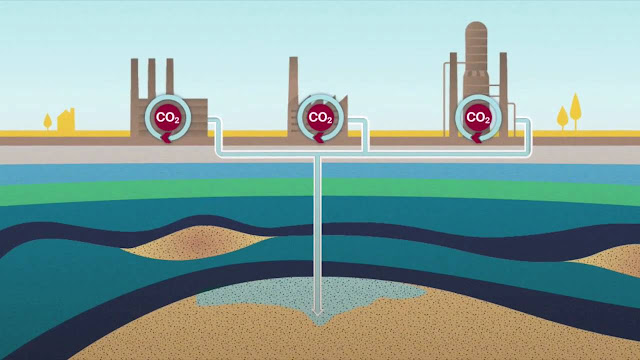Carbon Capture and Storage Market: Technological Innovations and Breakthroughs

Carbon Capture and Storage Market
The Carbon Capture and Storage (CCS) market has witnessed significant technological innovations and breakthroughs in recent years, revolutionizing the way we capture, transport, and store carbon dioxide (CO2) emissions. These advancements have enhanced the efficiency, effectiveness, and commercial viability of CCS technologies, driving the growth of the CCS market and its potential to mitigate climate change.
One notable technological
innovation in the CCS market is the development of advanced carbon capture
systems. Traditional carbon capture technologies, such as amine scrubbing, have
been enhanced with improved solvents, membranes, and absorption processes.
These innovations have led to increased CO2 capture rates, reduced energy
requirements, and lower costs. Additionally, novel capture technologies like
solid sorbents and enzyme-based systems are being researched and developed,
offering promising alternatives for efficient CO2 capture.
The carbon
capture and storage market was valued at US$ 1.76 Bn in
2021 and is forecast to reach a value of US$ 4.3 Bn
by 2030 at a CAGR of 10.6%between 2022 and 2030.
Another breakthrough in the CCS
market is the advancement of carbon transport infrastructure. Innovations in
pipeline design, materials, and monitoring systems have improved the efficiency
and safety of CO2 transport from capture sites to storage sites. These
advancements have reduced transportation costs, enhanced the scalability of CCS
projects, and increased the range of suitable storage locations.
Moreover, significant progress
has been made in CO2 storage technologies. Research and development efforts
have focused on improving the understanding of subsurface storage and ensuring
the long-term integrity and security of stored CO2. Advanced monitoring and
verification techniques, including geophysical surveys, tracers, and remote
sensing technologies, enable real-time monitoring of stored CO2, ensuring its
safe containment and preventing any leakage.
Emerging technologies, such as
direct air capture (DAC) and carbon capture and utilization (CCU), have also
contributed to the technological innovations in the CCS market. DAC
technologies directly capture CO2 from the ambient air, providing flexibility
in capturing emissions from dispersed sources. CCU technologies convert
captured CO2 into valuable products, such as chemicals, fuels, and building
materials, creating economic opportunities while reducing emissions.
Additionally, digitalization and
data analytics have played a significant role in advancing CCS technologies.
Real-time data monitoring, modeling, and optimization tools enhance the
operational efficiency and performance of CCS facilities. These technologies
enable predictive maintenance, optimal capture rates, and accurate accounting
of CO2 emissions, facilitating the overall effectiveness and cost-effectiveness
of CCS projects.
Furthermore, collaborations
between research institutions, industry stakeholders, and governments have been
instrumental in driving technological innovations in the Carbon
Capture and Storage Market. Public-private partnerships,
research grants, and knowledge-sharing platforms have fostered innovation,
facilitated the transfer of technologies, and supported the commercialization
of promising CCS solutions.
These technological innovations
and breakthroughs in the CCS market are paving the way for a more sustainable
and low-carbon future. They not only enhance the effectiveness and
cost-efficiency of CO2 capture, transport, and storage but also enable the
utilization of captured CO2 for economic benefits. As these technologies
continue to evolve and mature, the CCS market holds immense potential to play a
significant role in mitigating climate change, achieving emission reduction
targets, and transitioning to a more sustainable energy system.
Technological innovations and
breakthroughs in the Carbon Capture and Storage market are revolutionizing the
way we capture and store carbon dioxide emissions. Advancements in carbon
capture systems, transport infrastructure, storage technologies, and emerging
technologies like DAC and CCU are enhancing the efficiency, effectiveness, and
commercial viability of CCS solutions. Collaborations and partnerships drive
these innovations, ensuring a sustainable and low-carbon future. With continued
research and development, the CCS market is poised to make a significant impact
in the global efforts to combat climate change and reduce greenhouse gas
emissions.



Comments
Post a Comment